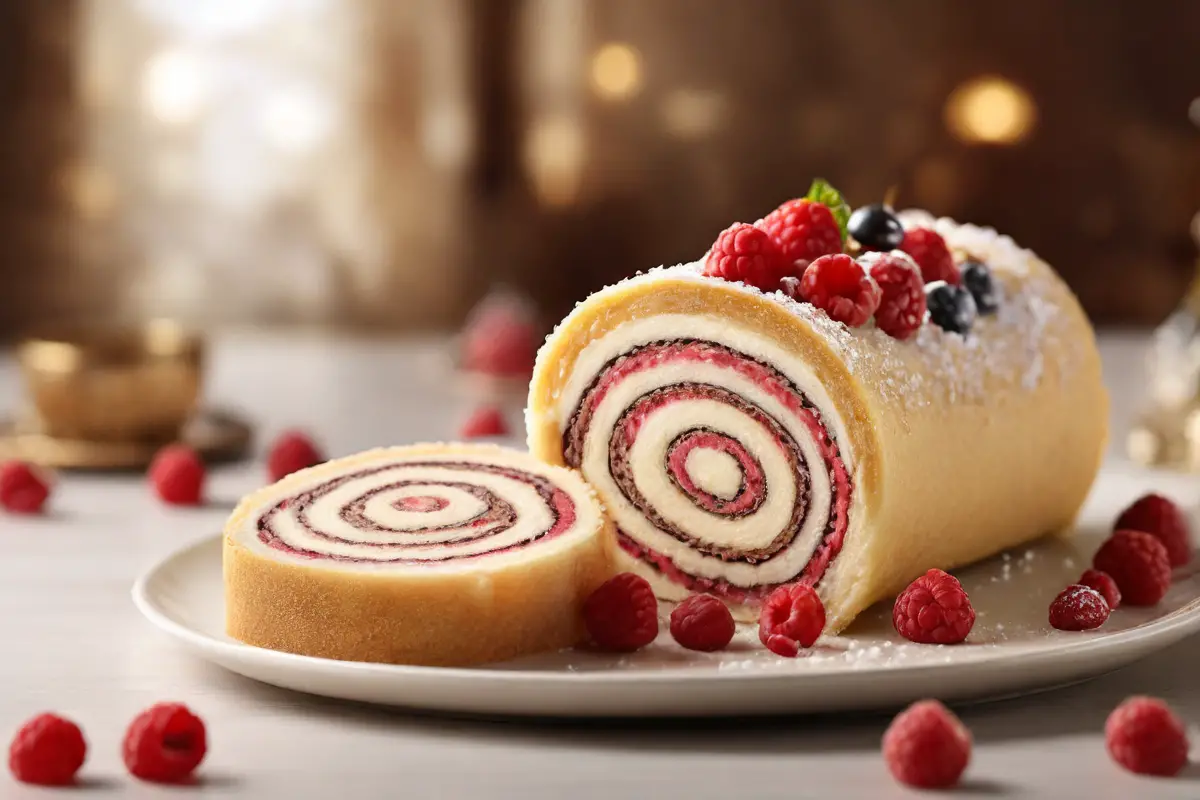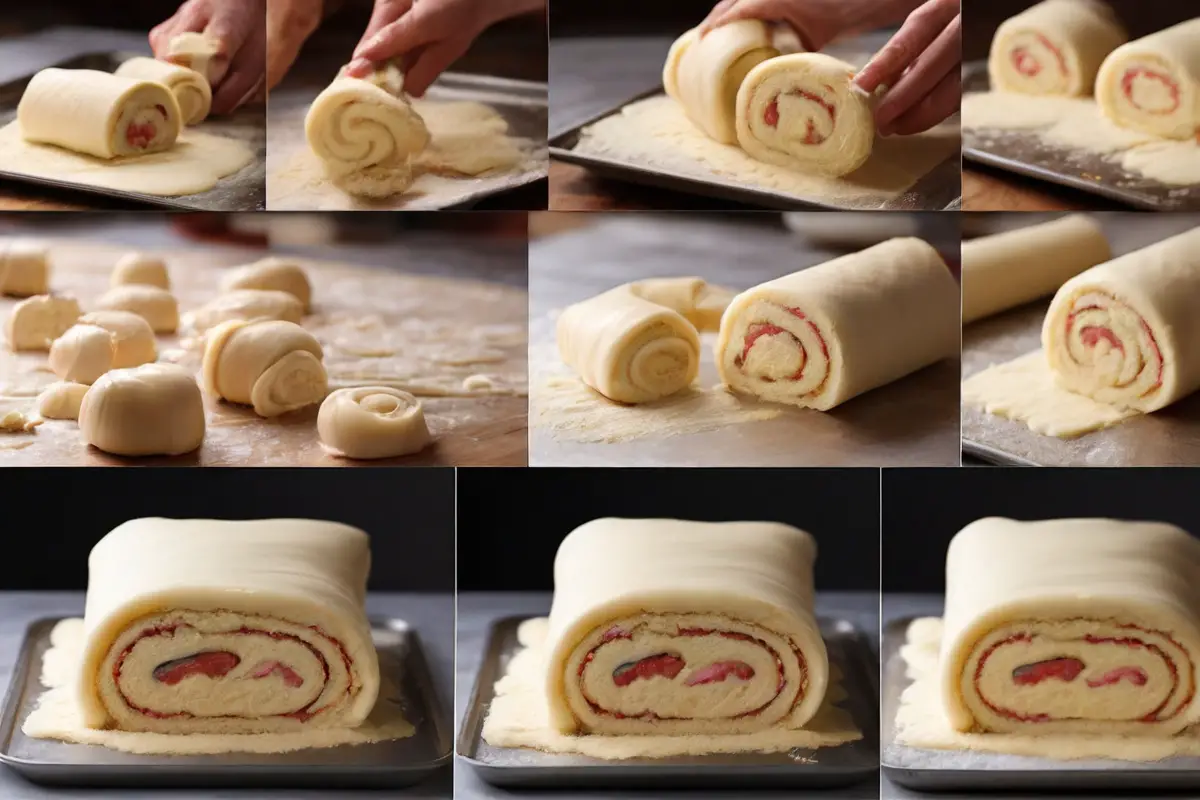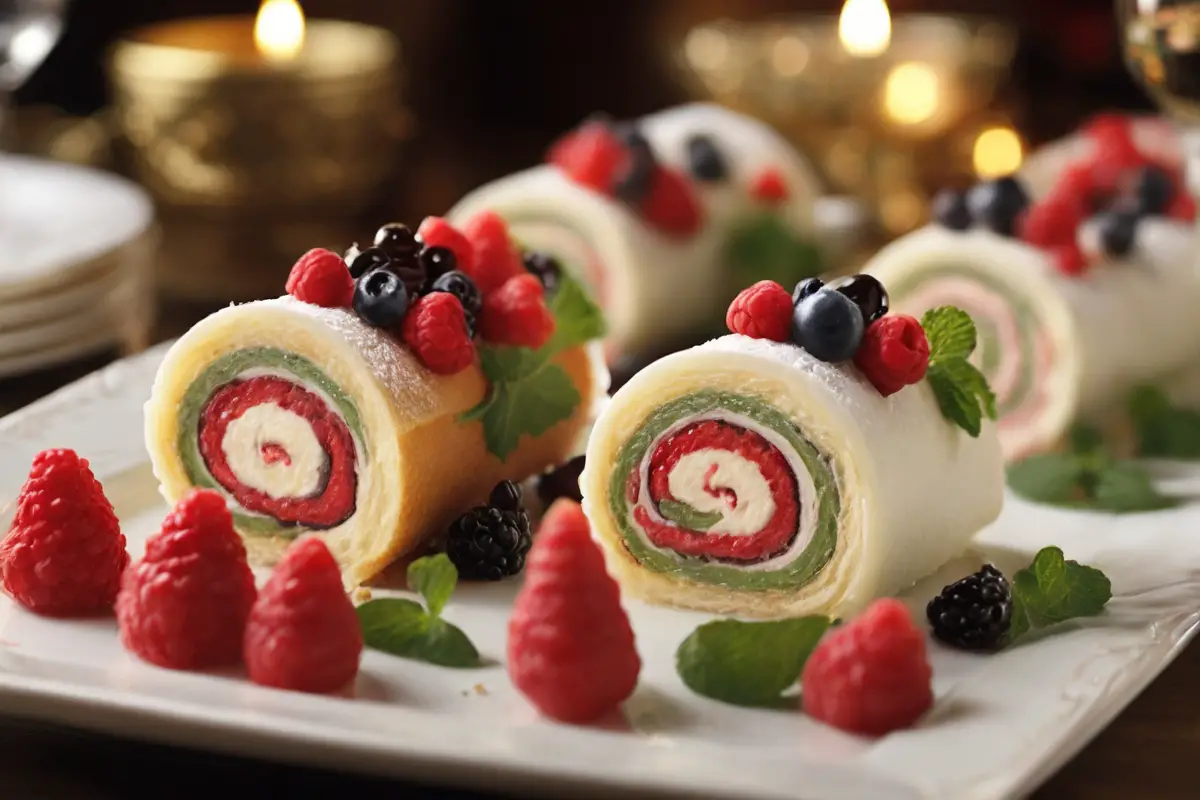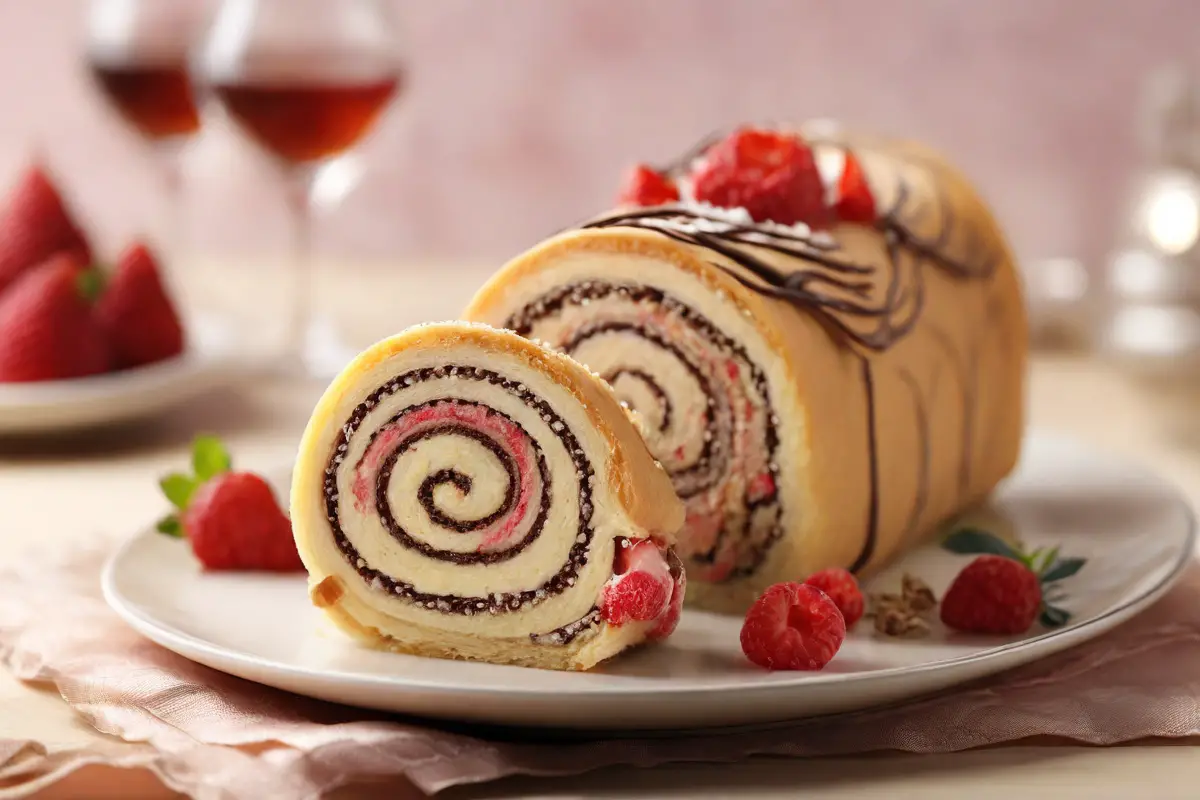Introduction to Swiss Rolls
Welcome to the delightful and intricate world of Swiss Rolls, a classic dessert that combines the elegance of a sponge cake with the richness of various fillings. In this comprehensive guide, we’ll embark on a culinary journey exploring the art of making Swiss Rolls. From the traditional chocolate and vanilla flavors to innovative and savory twists, this article will provide you with a deep dive into the techniques, variations, and secrets of creating the perfect Swiss Roll. Whether you’re a seasoned baker or new to the kitchen, these insights will help you master this beloved treat. So, let’s roll up our sleeves and unravel the layers of this delectable dessert!
The Origin and Popularity of Swiss Rolls
Swiss Rolls, despite their name, have a history that spans across various cultures and cuisines. Known for their spiral design and delicate texture, these rolls have become a favorite in many households and bakeries around the world.
Understanding the Basics of Swiss Rolls
At its core, a Swiss Roll is a thin sponge cake, rolled up with a filling of choice. The classic fillings include jams, creams, and buttercreams, but the possibilities are endless. Understanding the basic components and techniques is key to creating a successful Swiss Roll.
In the next part, we’ll delve into traditional recipes that have stood the test of time.
Traditional Swiss Roll Recipes
Chocolate Swiss Roll
The Chocolate Swiss Roll is a timeless classic, beloved for its rich cocoa flavor and velvety texture. To create this indulgent treat, you’ll need a light chocolate sponge cake, rolled with a creamy chocolate filling. The key is to achieve a balance between the bitterness of the cocoa and the sweetness of the filling, ensuring every bite is a harmonious blend of flavors.
Vanilla Swiss Roll
Equally popular is the Vanilla Swiss Roll, a lighter but no less delicious alternative. This version involves a fluffy vanilla sponge cake, often paired with a simple whipped cream or vanilla buttercream filling. The secret to a perfect Vanilla Swiss Roll lies in the quality of vanilla used, as it imparts a delicate, aromatic flavor to the cake.
In the next part, we’ll explore the key ingredients that make up these delightful Swiss Rolls.
For a deeper understanding of the balance of flavors in Swiss Roll recipes, visit Exploring Healthier Dessert Options. It’s a great resource for perfecting your Swiss Roll recipe and exploring new flavor combinations.

Key Ingredients for Swiss Rolls
Choosing the Right Flour and Eggs
The foundation of a Swiss Roll is its sponge cake, and the key to a perfect sponge lies in selecting the right flour and eggs. Use a fine, low-protein flour like cake flour for a light and airy texture. Eggs are crucial for structure and volume; they should be at room temperature to achieve the best aeration when beaten.
Flavor Variations and Add-ins
While the classic Swiss Roll flavors are chocolate and vanilla, the possibilities for variation are endless. Incorporating cocoa powder or melted chocolate can create a rich chocolate sponge, while vanilla beans or extract will give a fragrant vanilla flavor. For a twist, consider adding citrus zests, almond extract, or even spices like cinnamon to the batter. Fillings can also vary, from traditional jams and creams to fruit purees and flavored buttercreams.
In the next part, we’ll guide you through the step-by-step process of baking Swiss Rolls, ensuring your result is as delicious as it is beautiful.
For more information on ingredient choices and substitutions in baking, check out Healthy Baking Substitutes. It’s an excellent resource for adapting recipes to suit various dietary needs.
How to Bake Swiss Rolls
Preparing the Batter
The first step in baking a Swiss Roll is to prepare the batter. Start by whisking the eggs and sugar until they’re pale and fluffy, which can take several minutes. This process, known as ribboning, is crucial for incorporating air and achieving the sponge’s light texture. Gently fold in the sifted flour (and cocoa powder for chocolate rolls) to maintain the airiness. Be careful not to overmix, as this can deflate the batter.
Rolling Techniques for Perfect Swiss Rolls
Once the batter is spread evenly in a lined baking tray, bake it until it’s just set. The key to a successful Swiss Roll is rolling it while it’s still warm. This prevents cracking when you roll it again with the filling. Use a clean kitchen towel dusted with powdered sugar to roll the cake into a tight log. Allow it to cool in this shape before unrolling and adding your filling. Then, re-roll the cake, this time with the filling inside.
In the next part, we’ll explore innovative variations of Swiss Rolls to suit different tastes and dietary preferences.

Innovative Swiss Roll Variations
Fruit-Filled Swiss Rolls
One delightful variation of the classic Swiss Roll is the incorporation of fruit. You can spread a layer of fresh fruit compote, jam, or even fresh fruit slices along with the cream before rolling. This not only adds a burst of natural sweetness but also introduces a refreshing tanginess that can balance the richness of the cream.
Savory Swiss Roll Options
For those who prefer savory over sweet, savory Swiss Rolls are an innovative twist. Ingredients like herbed cream cheese, smoked salmon, or even pesto can be used as fillings. These savory rolls make excellent appetizers or party snacks, offering a unique take on the traditional Swiss Roll.
In the next part, we’ll look at tips for serving and presenting Swiss Rolls to ensure a perfect finish every time.
Tips for Serving and Presenting Swiss Rolls
Cutting and Plating Techniques
The presentation of a Swiss Roll can significantly enhance its appeal. To achieve clean and even slices, use a sharp serrated knife and gently saw through the roll. Chilling the roll before slicing can also help maintain its shape. When plating, consider the arrangement – perhaps fan out the slices or stack them for a more dynamic presentation.
Decorative Ideas for Special Occasions
Swiss Rolls offer a canvas for creativity, especially for special occasions. Consider garnishing with a dusting of powdered sugar, a drizzle of chocolate or fruit sauces, or even edible flowers for an elegant touch. For festive events, themed decorations or colored icings can transform your Swiss Roll into a centerpiece that captures the spirit of the celebration.
In the next part, we’ll delve into the nutritional considerations of Swiss Rolls and how to enjoy them as part of a balanced diet.

Nutritional Considerations for Swiss Rolls
Caloric Content and Dietary Considerations
Swiss Rolls, while delicious, are typically high in sugar and calories, primarily due to their sugar, flour, and cream content. It’s important for those monitoring their diet or sugar intake to be mindful of portion sizes. Enjoying Swiss Rolls as an occasional treat rather than a regular indulgence can be a part of a balanced diet.
Healthier Swiss Roll Alternatives
For a healthier alternative, consider modifying the recipe. Use whole grain flour instead of all-purpose flour to increase fiber content. Reducing the sugar in the sponge cake and opting for lighter fillings, like fresh fruit or low-fat cream, can significantly cut down on calories without compromising taste. Experimenting with sugar substitutes can also be an option for those looking to reduce sugar intake.
In the next part, we’ll share expert tips for perfecting your Swiss Roll, including troubleshooting common baking issues and professional baking secrets.
Expert Tips for Perfect Swiss Rolls
Troubleshooting Common Baking Issues
Baking Swiss Rolls can sometimes be challenging, but knowing how to troubleshoot common issues can make a big difference. If the sponge cake cracks during rolling, it might be due to overbaking or not rolling it while it’s warm enough. To avoid a dense sponge, ensure you’re not overmixing the batter and that you’re gently folding in the flour. If the roll uncoils after slicing, it could be due to insufficient cooling time before slicing.
Professional Baking Secrets
Professional bakers often have their secrets for perfect Swiss Rolls. One such tip is to add a tablespoon of vegetable oil to the batter for added moisture. Another secret is to use a damp towel when rolling the cake, as it helps prevent cracks and gives a tighter roll. For an extra fluffy sponge, some bakers recommend using a combination of baking powder and whipped egg whites to give the cake more lift.
In the conclusion, we’ll wrap up our comprehensive guide on making Swiss Rolls. Get ready to impress your family and friends with your new culinary skills!

Conclusion
As we conclude our journey through the delightful world of Swiss Rolls, it’s evident that this classic dessert is much more than just a rolled cake. It’s a versatile treat that allows for endless creativity in both flavor and presentation. From the traditional chocolate and vanilla varieties to the more adventurous fruit-filled and savory options, Swiss Rolls offer something for every palate.
Remember, the art of baking is as much about experimentation as it is about precision. Don’t be afraid to try new flavors, play with different fillings, and make each Swiss Roll uniquely yours. With the tips and techniques shared in this guide, you’re well-equipped to master the art of Swiss Roll making. Happy baking, and may your Swiss Rolls be as delightful to the taste as they are to the eye!

